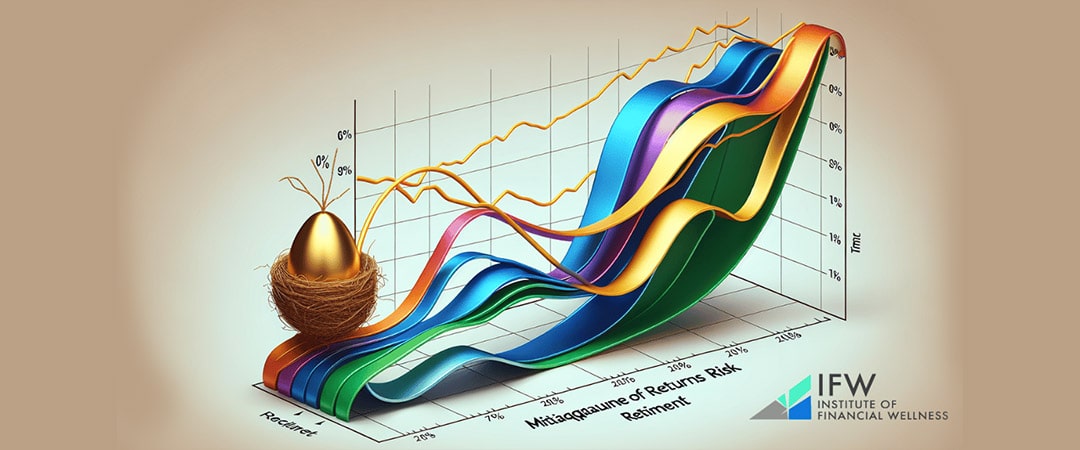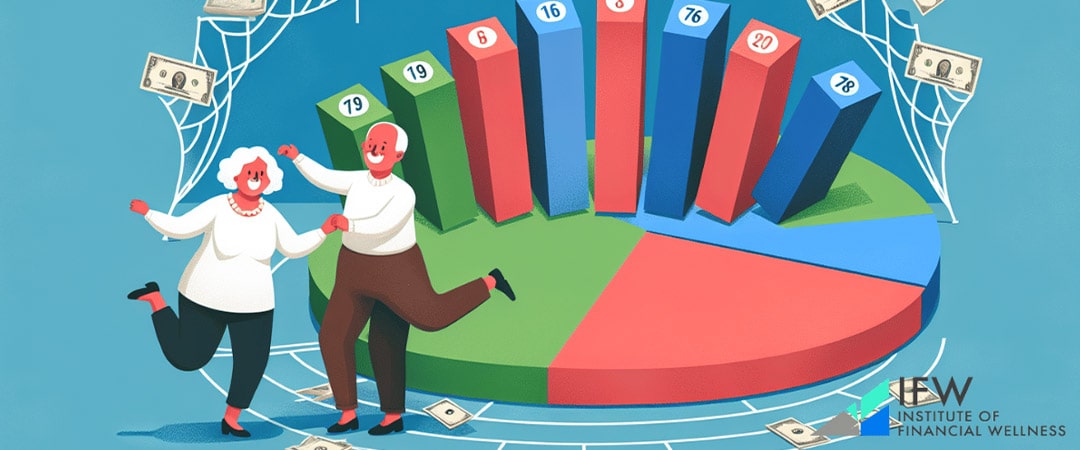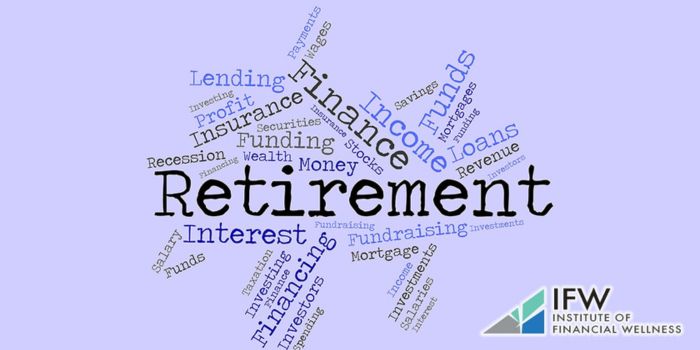“Investing should be more like watching paint dry or watching grass grow. If you want excitement, take $800 and go to Las Vegas.” – Paul Samuelson
What if the timing of your investment returns could drain your retirement funds too soon? Discover the crucial concept of ‘sequence of returns risk’—a game-changer for those approaching retirement. Dive into what it entails and why it’s significant, and uncover effective strategies to safeguard your future income!
Key Takeaways
- The sequence of returns risk is a critical factor in retirement planning, impacting the longevity of retirement savings, especially when negative returns occur early in retirement or during market downturns.
- Diversification across various asset classes, including stocks, bonds, and real estate, and incorporating fixed-income assets can help build a resilient investment portfolio and mitigate sequence of returns risk.
- Strategic withdrawal strategies and professional financial guidance are essential to managing sequence risk, preserving retirement income, and achieving long-term retirement objectives.
Decoding Sequence of Returns Risk
The risk of a sequence of returns is an important consideration in retirement planning, as it refers to how the timing and order of investment returns can affect the longevity of one’s retirement savings. In simple terms, if negative investment returns occur early on in retirement, there may be a faster depletion of assets, which could make recovery more difficult later on. This risk is especially significant for retirees who rely on their retirement portfolios only as a source of income since they must still withdraw funds even during market downturns.
Several factors contribute to this type of risk, including market volatility and rising interest rates, that can lead to losses in bond investments, making it harder for individuals whose withdrawals are timed poorly or have high levels to sustain their portfolio over time. Understanding these elements plays a crucial role when managing sequence risk and ensuring stability within your retirement income.
Overall, being aware that events such as increasing interest rates will not only result in substantial losses but exacerbate potential negative impacts due to its nature amplifying effect on other contributing risks makes grasping these elements more critical so as to better manage asset allocation and protect your retirement income over the year despite unfavorable market conditions.
Market Volatility Impact on Different Scenarios
Let’s take a closer look at a few different investment scenarios. The first few focus on how market volatility affects a portfolio while assets are accumulating, and the last scenario focuses on how market volatility affects a portfolio from which distributions are being taken.
One study found the sequence of returns appears manageable during accumulation. In addition, an analysis from BlackRock compared three model investing scenarios: three investors start portfolios with lump sums of $1 million, and each of the three portfolios averages a 7% annual return across 25 years.
In two of these scenarios, annual returns ranged from a hypothetical -7% to +22%. In the third scenario, the return is simply 7% every year. In all three situations, as you can see, each investor accumulates the same total of $5,434,372 after 25 years. This is because the average annual return is a hypothetical 7% in each of the three portfolios [1].
It’s important to remember that any investing involves risks, and investment decisions should be based on your own goals, time horizon, and risk tolerance. The return and principal value of investments will fluctuate as market conditions change. When sold, investments may be worth more or less than their original cost.
The BlackRock study finds that the three hypothetical investors evaluated their financial ability to continue making purchases through periods of declining and rising prices.
Protecting Your Nest Egg from Sequence of Returns Risk
When you shift from asset accumulation to asset distribution, the story can change. There is the risk that your distribution strategy could coincide with a period of declining prices, meaning a new challenge to overcome. The IFW Retirement Roadmap Live Webinar can help you understand and protect yourself from this risk.
In an extreme illustration, consider the 2007-2009 bear market. In this example, a hypothetical investor entered 2008 with a $1 million portfolio and held 60% in equities and 40% in fixed-income investments. In this case, the investor was preparing to retire in 12 months, on December 31, 2008.
During 2008, the bond market, as measured by the S&P U.S. Aggregate Bond Index rose 5.7%, but the stock market, as measured by the S&P 500 Index, lost 37.0%. Also, the $1 million portfolio ended the year with a balance of $800,800 [2].
If the hypothetical investor started taking distributions in January 2009, they would be starting from a smaller portfolio balance, plus they may not have the opportunity to rebuild the principal that was lost in the prior 12 months.
If you are preparing to retire, at IFW, we believe that having an understanding of the sequence of returns may help you ask important questions about your overall investment strategy.
The Impact on Your Retirement Nest Egg

Retirement savings are susceptible to the consequences of a sequence of returns risk, which can result in a chain reaction leading to reduced portfolio value and lower investment returns. This poses a threat to achieving long-term retirement goals. Implementing effective withdrawal strategies can help mitigate this risk by carefully considering the order and timing of withdrawals over an extended period.
Imagine facing early negative investment returns during your retirement years. Such circumstances could greatly diminish your nest egg and make it difficult to recover financially. One solution is incorporating permanent life insurance into your overall retirement plan, as it provides added protection for sustaining income during this crucial stage in life.
Creating a Resilient Investment Portfolio

A strong defense against sequence risk is a robust investment portfolio constructed with careful consideration of diversification, inclusion of fixed-income investments, and timely modifications to asset allocation. These tactics will be thoroughly explored, and their effectiveness in fortifying your retirement portfolio against the potential impact of sequence risk will be evaluated.
Diversifying Across Asset Classes
Similar to a tightrope walker using a long pole for balance, diversification is an important strategy in the investment world. This involves spreading investments across different types of assets like stocks, bonds, cash, Treasury bills, real estate, and precious metals. The main purpose of this approach is to reduce risk and protect against market volatility.
Diversification works by taking advantage of the correlation between various types of investments. By combining low or negatively correlated assets such as equity, fixed-income securities, and alternatives in a portfolio, risks can be spread effectively, resulting in smoother fluctuations. It also allows flexibility to switch between liquid assets that provide immediate access to funds versus those generating long-term income. Thereby reducing the sequence of returns risk, which refers to receiving poor investment results during retirement due to timing your withdrawals poorly with unstable markets.
In summary, different from balancing on ropes, the practice known as diversification helps investors mitigate their exposure to potential losses caused by volatile markets. It does so by leveraging the fact that some types of asset classes, such as asset equities, bonds, and alternative vehicles, relate positively while others are weakly or passively. The aim is to stabilize portfolio value over time periods and allow switching between asset categories for liquidity or income generation purposes. This minimizes the risk of experiencing poorer-than-expected returns when starting to withdraw money from your savings during retirement in an income-ruled environment such as this one implied by market upheaval.
The Role of Fixed Income in Stabilizing Returns
In the face of market volatility, fixed-income assets can serve as a stabilizing force for your retirement portfolio. These investments, such as bonds, CDs, and money-market funds, provide steady interest payments that can help offset losses from declining stock prices and reduce overall portfolio volatility. Including these types of investment accounts in your financial strategy is an important consideration.
It’s crucial to keep in mind how interest rates affect fixed-income investments. Typically, when interest rates go up, bond prices tend to decline, which impacts their performance. To effectively manage sequence risk and maintain a well-balanced retirement portfolio, understanding this sensitivity to changes in interest rates is essential.
Adjusting Asset Allocation Over Time

Just as you tweak the sails of a boat to maximize wind efficiency, adjusting asset allocation over time is crucial in managing a retirement portfolio. Maintaining an optimal balance between risk and return necessitates this action. What form does this adjustment take?
As individuals age, it is generally recommended to shift towards a more conservative asset allocation, with a higher percentage of bonds and cash equivalents and a lower percentage of stocks. Making these adjustments can have a significant impact by aligning investments with long-term goals and reducing risk as retirement approaches. Also, diversifying the portfolio with a combination of stocks and bonds is a fundamental investment strategy used to mitigate the sequence of returns risk and achieve a desirable average annual return.
Safeguarding Retirement Income with Withdrawal Strategies
Ensuring the resilience of your portfolio is essential, but implementing strategic withdrawal methods can provide an additional layer of protection against sequence risk. Buckle up and join us to closely examine these approaches and discuss their benefits as well as potential drawbacks.
The Dynamic Spending Approach
In the world of retirement planning, a dynamic spending approach operates similarly to a tightrope walker adjusting their pace based on wind conditions. This strategy offers both flexibility and combines elements from dollar-plus-inflation and percentage-of-portfolio methods. Research has shown that it can generate more wealth than traditional fixed-percentage strategies in retirement withdrawal plans.
Like all approaches, there are downsides to consider with this method as well. It relies heavily on unpredictable stock market and performance, which can be volatile at times, making it challenging to accurately adjust retirement distributions. Frequent adjustments may also be necessary when implementing this strategy for managing one’s portfolio during retirement.
Pros and Cons of Fixed Withdrawal Strategies
Imagine having a set path for navigating through an ever-changing environment. This is what fixed withdrawal methods, such as the 4% rule, provide. The strategy recommends taking out 4% of retirement savings each year in the first year of retirement and adjusting it for inflation in later years. Its simplicity and predictability make it appealing.
This inflexible approach to annual withdrawals may not generate enough income or adapt to evolving market conditions. It also carries the risk of depleting funds prematurely compared to more dynamic spending strategies. This highlights the importance of understanding both the advantages and disadvantages associated with different withdrawal tactics when safeguarding against sequence risk in one’s retirement income.
Integrating Insurance Products into Retirement Planning

Similar to how a warrior wears armor for defense during combat, insurance offerings can act as a safeguard in your retirement preparations, reducing the impact of sequence of returns risk and offering added economic stability.
The Cash Value Advantage
Imagine having a secure storage box that not only safeguards your valuable belongings but also generates interest over time. This is similar to the cash value component of life insurance policies, which can serve as an additional source of retirement income and offer tax benefits. You have the flexibility to withdraw funds from this cash value for essential financial obligations such as covering living expenses.
It’s important to approach accessing this cash value with caution. There are two ways you can do so (through policy loans or withdrawals), each with its own terms and potential impact on the death benefit aspect of your policy. Seeking guidance from a financial advisor or insurance professional is crucial in understanding these specific terms when using your life insurance policy’s cash value for retirement income purposes.
Balancing Insurance and Investments
Achieving a harmonious combination of insurance and investments can be compared to maintaining stability on a seesaw. It is crucial to create a comprehensive retirement strategy, increase one’s knowledge about financial planning, recognize the importance of incorporating insurance into the plan, and improve decision-making abilities when it comes to choosing appropriate insurance policies.
By providing savings opportunities, deferring income taxes, and ensuring financial security against various risks during retirement years, insurance products can complement investment tactics. However, it is essential to strike an adequate balance between these two elements, as misalignment could result in unnecessary risks and potential depreciation of investments, which may compromise overall financial well-being during retirement.
Leveraging Guaranteed Income Sources

In the realm of retirement planning, having a reliable source of income is crucial to navigating potential risks such as sequence risk. Just like how water serves as a lifeline in the desert, guaranteed sources of income like Social Security and annuities can provide that much-needed stability.
Social Security offers retirement benefits and disability income for those who are eligible, while annuities have their own set of advantages, including steady lifetime income, management and growth opportunities for retirement savings, prevention against outliving assets, and tax perks. By utilizing these guaranteed sources of income effectively, it becomes easier to manage sequence risk during one’s retirement years.
The Psychological Aspect: Behavioral Finance and Sequence Risk
Similar to how a magician uses misdirection to create illusions, our psychological biases can cause us to make poor financial decisions. In particular, behavioral finance greatly impacts sequence risk as feelings like fear, greed, overconfidence, and loss aversion can lead us astray when making investment choices.
Being aware of these tendencies and taking steps to prevent them from influencing our decision-making is crucial in retirement planning. Seeking out diverse perspectives on the matter, utilizing tools and frameworks designed for this purpose, and continuously learning and adapting are all effective ways to mitigate the impact of these psychological biases on sequencing risk. This knowledge, combined with professional guidance, provides individuals with greater confidence when navigating the complexities involved in retirement planning.
It is important not to underestimate the role that behavioral and personal finance play in amplifying sequence risk during retirement preparation. Emotions such as fear or greed may cause people to act irrationally, leading to unwise investments that could jeopardize their future stability. Consequently, determining different approaches, such as seeking advice from professionals, researching various strategies, and being open-minded, along with constant development, could help minimize those undesirable effects. At long last, in combination with receiving expert assistance, this insight enables retirees to tackle effectively the challenges related to retirement.
Tailoring a Financial Plan with Professional Guidance

Imagine having your own personal tour guide navigate the intricate maze of retirement planning. Seeking professional financial advice can serve as this type of guidance, tailoring a retirement plan that takes into consideration the sequence of returns risk and aligns with your specific goals and tolerance for risk.
Professional guidance has the potential to significantly impact your financial plan by customizing it according to your needs. This assistance can include:
- Evaluating how much investment risk you are comfortable taking on through targeted questions and surveys
- Matching your investment risk profile with what you hope to achieve financially
- Developing a flexible framework for making necessary adjustments in regard to investments
Reaching out for help from a certified financial planner is beneficial when trying to create an individualized approach to investing that works harmoniously with long-term objectives such as preparing for retirement.
Navigating Market Conditions and Interest Rate Changes
Managing sequence risk and maintaining a well-rounded retirement portfolio requires adaptability in the face of changing market conditions, much like adjusting sails to shifting winds for a sailor. This is especially important for retirees who rely on fixed sources of income, such as pensions, Social Security benefits, and investments with set interest or dividend payments. Fluctuations in interest rates can significantly impact these incomes and may even lead to capital losses from bond portfolios.
As interest rates rise, it becomes crucial to navigate through potential down markets wisely. Retirees should carefully monitor changes in their investment returns due to increasing interest rates, which can contribute greatly to managing sequence risk over time. These fluctuations also call for strategic adjustments within one’s portfolio composition during periods of volatility so that any negative impacts are minimized.
To effectively mitigate sequence risk during retirement years means staying informed about market conditions while closely monitoring how rising interests might affect different types of income streams generated by various investments comprising an individual’s overall portfolio mix.
Navigating Retirement with Confidence: The Institute of Financial Wellness Guides You Through Managing Sequence of Returns Risk

The Institute of Financial Wellness provides a wide range of educational materials dedicated to teaching about financial matters. Our focus is on helping people gain insight and overcome the challenges associated with managing the sequence of returns risk in retirement planning.
It’s never been more important than now to mitigate market risk, devise a tax reduction game plan, and learn strategies for the most retirement income. If you’re interested in paying less or possibly no tax, increasing retirement income, and never running out of money in retirement, make sure to attend the next live IFW Retirement Roadmap Webinar. It’s FREE & happens every Wednesday at 7 PM. EST. Get all your retirement questions answered during the live Q&A. Every attendee also has the opportunity to receive their own customized retirement roadmap. REGISTER FREE NOW!
Full Summary
Understanding and effectively managing the sequence of returns risk is a complex task. It involves interpreting the risk, evaluating its impact on your retirement savings, developing a resilient investment portfolio, implementing strategic withdrawal tactics, incorporating insurance products, utilizing guaranteed income sources for stability, considering psychological factors, and navigating market fluctuations and changes in interest rates. Daunting it may seem at first glance, though, with guidance from professionals, resources provided by the Institute of Financial Wellness, and employing strategies outlined in this article, you can successfully tackle this challenge head-on to safeguard your financial security during retirement.
Frequently Asked Questions
How do you combat the sequence of return risk?
To combat the sequence of return risk, consider spending conservatively, maintaining spending flexibility, reducing volatility, and avoiding selling at losses. Additionally, plan for market downturns, use a gradual allocation path, keep cash reserves, and look beyond the short term to reduce risk.
What is the sequence of retirement risk?
The sequence of retirement risk refers to the danger that the timing of withdrawals from a retirement account will damage the investor’s overall return, particularly if they occur during a bear market. This is known as sequence-of-returns risk, and it can have a significant impact on the longevity of your retirement savings.
A diversified portfolio can be helpful in managing this risk.
What are the risk-return quadrants?
The risk-return quadrants consist of four profiles with varying combinations of estimated returns and risk levels, ranging from high returns with low risk to low returns with high risk.
It’s important to consider these quadrants when assessing investment opportunities.
How can diversification help in managing the sequence of returns risk?
Diversification is an effective way to handle the potential risks associated with the sequence of returns. This approach involves distributing investments among various asset classes, thereby minimizing exposure to specific hazards and stabilizing changes in the portfolio value. By doing so, diversification can serve as a shield against fluctuations caused by market volatility.
What is the role of insurance products in retirement planning?
Retirement planning relies heavily on insurance products, which serve as a protective barrier against financial uncertainties. These products also provide tax benefits and act as an added source of income during retirement years. They are effective in reducing the potential impact of returns risk, ensuring stability for one’s finances, and securing their future.
How does the sequence of returns risk affect a portfolio?
Vanguard’s research reveals that it can lead to a 12% decrease in the value of a portfolio over a 30-year timeframe [3].
How long are funds likely to last for a retiree facing a bear market?
A retiree facing a bear market in the first year of retirement, coupled with an annual 4% portfolio withdrawal, has a 57% probability of exhausting their funds within 30 years [4].
What is a realistic rate of return for retirement?
Gaining insight into a realistic rate of return is crucial for crafting an accurate retirement plan. However, achieving this requires delving beyond the nominal rate of return, which represents the income generated by your investments before factoring in administration fees, taxes, and inflation.
Relying solely on the nominal rate of return may provide a distorted view of your investment income. Instead, focusing on the real rate of return offers a clearer understanding of the actual money you’ll have available in retirement.
Consider this scenario: You invest in a fund with a historical nominal rate of return of 8%. However, the fund incurs a 0.5% management fee, and inflation stands at 3%. Subtracting 3.5% from the return before reaching your pocket reveals a true return of 4.5%. Therefore, on a $100,000 investment, the real return would be $4,500, accounting for fees and inflation [5].




